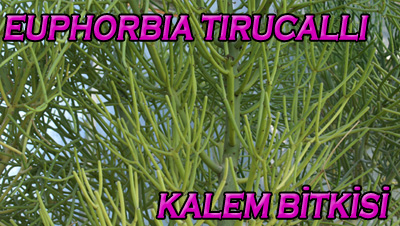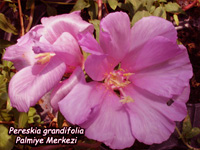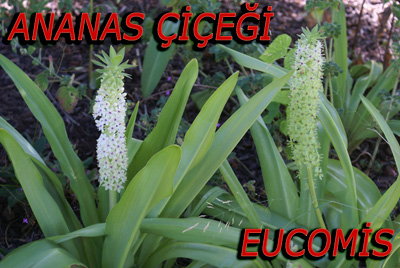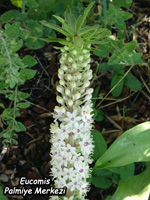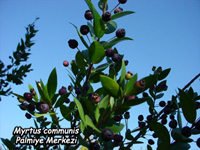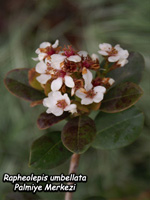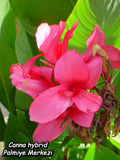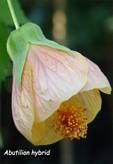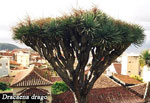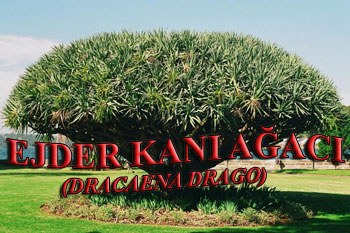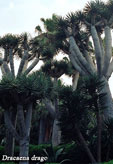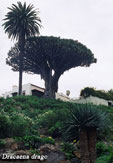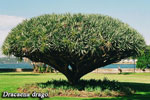 |
| |
|
|
|
If you wish this
program to be sent to your or your friends’ e-mail address,
please get a subscription (totally free of charge, and no
advertisements will be sent). I would like to get a subscription to “The Fourth Dimension in Landscape Design”>>>>>>> |
PEYZAJDA 4. BOYUT December 2008
|
There are around 190 different species of Dombeya of which 7 are found in the wild in South Africa. This is one of them, Dombeya burgessiae, a small tree and a member of the Sterculiaceae family. |
|
|
|
DOMBEYA TREE - DOMBEYA BURGESSİAE Dombeya burgessiae, also known as Wild Pink Pear, is found in the wild in Africa from Kwazulu – Natal in the south up to Tanzania across a wide geographic region. In the wild it grows on the edge of forests, in mountainous or hilly areas and along river valleys. The name ‘Dombeya’ comes from the plant collector Joseph Dombey who discovered it and also collected many plants from South America. It is a small tree rarely growing to more than 4 metres in height with a span of 4 metres. In a small garden it is a good specimen tree and works in groups in larger gardens. It will grow in full sun or partial shade. It has large green, lobed leaves which are soft and resemble grape vine leaves. It flowers in October – November with its pink or white flowers giving colour to the winter garden. Flowers left on the tree will die and turn a light brown in colour as they dry. Once dried they can be picked with their stems and used in dried flower displays indoors. Dombeya trees are fast growing, once planted in the ground they reach maturity in 3 – 4 years. They withstand dry periods and light frost. At the Palm Centre these trees have experienced -60C at which point they lose their leaves but these grow back again the following summer. They grow from seed which germinates easily and the young plants grow quickly. In terms of landscape design this tree can be used as a specimen or several may be grouped together anywhere in the Mediterranean region of Turkey. When most trees have lost their leaves for the winter and hardly anything is in flower, dombeya attracts attention with its pink – white flowers. As it can grow in shade you could even plant it underneath taller trees. |
PEYZAJDA 4. BOYUT November 2008
|
Helikirizum’ lar Avrupa, Asya, özelikle Avustralya ve Güney Afrika’da bulunan 500 kadar türü kapsar. Astraceae Yıldızgiller familyasına aittirler. Helichyrisum adı Yunan’ca elios: güneş ve chrysos: altın kelimelerinden türetilmiştir. Ancak ailenin tüm üyelerinin çiçekleri altın veya sarı renkte değildir. Petiolare kelimesi de, bitkinin çiçek sapının uzun olmasını tarif etmektedir. |
|
|
|
PETİOLAR HELİKİRİZUM - HELİCHRYSUM PETİOLARE Petiolar Helikirizum “Helichrysum petiolare” Güney Afrika kökenli bir bitkidir. Bitki, yumuşak yapraklı, çabuk büyüyen ve yayılan, çok yıllık bir çalıdır. Yüksekliği 50 cm i, çapı 120 cm i pek geçmez. Kokulu, yaprakları 3–3,5cm uzunlukta, yuvarlak kenarlıdır. Yaprakların üzeri gümüşi-gri renkli tüylerle kaplı, altları ise daha açık renktedir. Ağustos-Eylül aylarında üzeri, uzun saplı, krem rengi çiçek püskülleri ile kaplanır, bu da bitkiye ayrı bir güzellik verir.
Doğasında, Güney Afrika Cape bölgesinde, denizden uzak,
orman kenarlarında ve dağ kenarlarında bulunur. Hafif
kısa veya uzun süreli donlara dayanmaktadır. Bitki güneş
altında daha iyi ve formda gelişim gösterir. Susuzluğa
oldukça dayanıklıdır. Toprak için çok seçici değildir,
ancak geçirgen, humuslu toprakta gelişimi daha iyi
olmaktadır. “Limelight” kültüründe, yaprak rengi gümüşi-gri yerine, sarı-yeşildir. Bu kültür yarı gölge ortamda daha iyi gelişmektedir, ancak aslı kadar boylanmaz ve ömrü genellikle 2 yılı geçmemektedir. “Aurea”, “Sky Net” ve Varigeata (Ebruri) kültürleri de elde edilmiştir ve bugün sıklıkla peyzajda kullanılmaktadırlar. Peyzajda genellikle, bordür bitkisi veya yeşil ve kırmızı renkli yapraklı bitkiler arasında, renk kontrastı yaratmak için kullanılır. Peyzaj dışında, yaprakları Güney Afrika yerlileri tarafından soğuk algınlığı, öksürük, astım tedavisi, akciğer hastalıklarında ve yüksek tansiyonda, popüler bir ilaç olarak kullanılmaktadır. Yaprakların yakılmasından çıkan duman, nefes yolu ile alınarak ağrı giderici olarak kullanılır. Yapraklar ayrıca yarada enfeksiyona engel olmak için kullanılmaktadır. Khoikhoi kabilesi yaprakları ve çiçeklerini yatak yapmak için kullanmışlardır. Helichrysum and Artemisia afra yaprakları birlikte yakılarak, sinek ve sivrisineklere karşı hoş kokulu, repellent (böcek kovucu) olarak kullanılır. |
PEYZAJDA 4. BOYUT October 2008
|
The euphorbias are a very large family which includes both succulent and non-succulent type plants. It has over 2000 species which in general are found in temperate and hot regions of the globe. Some of them grow like grasses, others like multi-stemmed shrubs whilst some reach tree proportions, many of them can be taken for cactus on a first glance. The ‘Euphorbus’ from whom they take their name lived in the 1st century and was doctor to King Juba of Mauritania. It is known that Euphorbus used the plants that now bear his name for their medicinal properties. The species name tirucalli comes from the region of Malabar in south India, and was given to this plant in 1753 by Linnaeus within his comprehensive classification of plant names. |
|
|
|
EUPHORBIA TIRUCALLI:Pencil plant, Deer’s antler plant The Pencil Plant (Euphorbia tirucalli) is a multi-branching succulent. It is native to tropical regions of east and south Africa. Outside of Africa it can be found in India, China, Indonesia and the Philippines and the fact that it is encountered in so many different countries, would seem to support the idea that it has long been known as a useful plant. It can grow from 3 – 5 metres up to as high as 10. The young trunk and branches are green but as they age they become grey and develop a rough-looking surface. The green branches are smooth, unblemished and cylindrical in form with tiny cylindrical leaves a maximum of 12 x 1.5mm in size. Leaves only stay on the plant for a short time after which it presents as a trunk and branches only. For this reason it is sometimes known as the Naked English Lady plant. As the plant can photosynthesise via its green trunk and branches it actually has no need of leaves. Almost insignificant small yellow tufted flowers open on the newest branches from April to June. One to two months after flowering, round fruits some 10 – 12mm in diameter appear attached to the branches by a short stem. Inside the fruits brown oval seeds are found. The trunk and branches of this plant are filled with a white liquid which emerges when they are damaged in any way. This latex-like liquid is toxic and most people will have some form of allergic reaction to it. In particular it is vital that the liquid not come into contact with eyes, mouth or nose. The plant is ideal for arid conditions. It not only withstands drought well but also rejuvenates itself rapidly following long periods without water. In the tropics it is often used as a hedging plant. Animals and birds are aware of its toxicity and leave it well alone. The latex contained in euphorbia tirucalli is partially hard rubber and partially a resin, and it has no great value. There have been experiments to try and produce biodiesel from the substance and, for this reason, the plant is sometimes called the ‘Petrol Plant’. It is a good plant for indoors, except where small children could come into contact with its toxic latex. In Mediterranean gardens it can be used in very sheltered conditions. It can be grown from seed or cuttings which root rapidly and can withstand drought, but will not survive where the temperature drops below 0oC. Any serious frost will kill this plant. |
|
|
PEYZAJDA 4. BOYUT September 2008
PEYZAJDA 4. BOYUT August 2008
|
|
|
PERESKİA The Pereskias are a family of primitive cacti comprising 16 varieties. They grow as trees, climbers or shrubs and are found in Florida, Mexico, Central America, tropical regions of South America where they grow in forests under the shade canopy. The shrub form generally reaches a height of 1m, whilst climbers and trees can grow to 5 – 20m. It is a long-lived perennial whose soft thorny branches will, over time, take on the appearance of hardened wood. Some Pereskia grow from rhizomes. They generally have long oval leaves but there are types with a round leaf. They are evergreen except for some varieties that shed their leaves during periods of dormancy. Their flowers resemble wild roses and can be found in single or double format. Pereskias withstand damp much more readily than other forms of cactus and if grafted on to Zygocactus root stock can form miniature trees. Pereskia grandiflora : Cactus Rose Native to south east Brazil this is a shrub or small tree. It is usually used as a decorative tree which can grow to 2 – 5m. Its grey/brown trunk can reach a diameter of 20cm. On the trunk and branches small round areas can be seen (these are specific to cactus) which on the branches will be 3 – 5mm, but can be up to 12mm on the trunk, from which brown feathery hairs are produced which eventually become thorns. From one such area on the trunk as many as 90 thorns each 3-5cm in length may appear. Pereskia grandiflora can be treated as all other cactus, it does not need any special care. It likes lots of light and can be grown from seed or cuttings. All pereskias are tender and will not withstand any frost. In places where frost is expected they should not be planted directly in the garden. |
|
|
PEYZAJDA 4. BOYUT July 2008
|
This month we’d like to introduce you to Eucomis also known as the Pineapple Flower plant. It is not widely known in Turkey and, as far as we are aware, can only be bought at the Palm Centre. However, it is hardy, low maintenance, disease resistant and, with its striking flowers, will add colour and interest to any garden. |
|
|
|
EUCOMIS : PINEAPPLE FLOWER Eucomis are a group of 15 varieties of deciduous plants native to South Africa. They grow from bulbs, are perennials and are very long-lived. They produce flowers on a tall stem where tiny star-like flowers cover the length of the stem. It is from this flower stem, and the shape of the leaves, that it gets its common name Pineapple Flower. Eucomis will stand slight frost, loses its leaves in winter and does not need much water. If these conditions don’t match your garden, then it can be potted up for the winter and taken indoors. It can be grown from seed, or from bulbs split off from established plants. It can also be propagated from leaf cuttings. Bulbs should be planted 15 cm below the surface. Soil should be rich in humus and well draining. It is happy in full sun or partial shade. Eucomis autumnalis: has leaves up to 45 cm in length and produces a very long stem studded with countless greenish-white flowers which open in summer or early autumn. The bright green leaves have curly edges. Eucomis comusus: grows to 70 cm and has light green leaves with almost purple undersides. The leaves have wavy edges and the 30 cm flower stem has greenish-white flowers which may also have pink stains upon them. Eucomis bicolour: has leaves 30 – 50 cm long similar to those described above. It produces a brown flower stem with light green flowers whose petals have purple edges. |
|
|
PEYZAJDA 4. BOYUT June 2008
|
The pistacias are members of the Anacardiaceae or Mango family. There are 11 different varieties of pistacia some deciduous and others evergreen. Various varieties are native to the Mediterranean, Central Asia, Malaysia, Japan, Europe and Mexico. |
|
|
|
Pistacia chinensis (Chinese mastic tree): Frequently used in landscape schemes this tree is native to central and western China. In spring it has sweet smelling red flowers and in autumn its leaves turn red before dropping. Pistacia atlantica: Found in western Anatolia and locally known as ‘mineç’ this is a big showy tree. Its young shoots are used as vegetables. Pistacia terebinthus: Native to eastern Mediterranean countries this is a deciduous tree. A form of turpentine is made from the sap of the tree. Turpentine is also extracted from pine trees. It is used in paint and varnish factories as well as other forms of manufacturing. The tree has greenish flowers which open between April and June and it grows to anywhere between 2 – 6m in height. Its fruits start off red in colour then turn brown and resin from these fruits produces both stable and volatile oils. Villagers call this tree ‘menengiç’ and folk medicine uses its leaves for their antiseptic properties, in treatment of peptic ulcers and also for the relief of sunburn. The fruits are used as a diuretic and an expectorant. Pistacia lentiscus (Mastic tree): Native to the Mediterranean region and sometimes called the ‘green pistacia’. It is an evergreen and can be a large shrub or a small tree with a single trunk, or multiple trunks. It can grow to 5m in height. From cuts in the trunk a scented liquid called ‘mastic’ is collected. This is claimed to ‘cleanse’ the mouth and is used in medicines. It is also used to scent cakes, jams and ice creams. Pistacia lentiscus var. latifolius A variety only found on Sakiz Island and along the Çeşme peninsula. It can grow to 10m in height and is evergreen. Cutting the branches of this tree produces Mastic Drops which are used to cure stomach aches or diarrhea by villagers. |
|
|
PEYZAJDA 4. BOYUT May 2008
|
Whilst most of the plants we feature as Plants of the Month are new to Turkey, we do believe that more attention should be given to plants which are native to Turkey and, from time to time, we focus on such specimens. This month and next we are featuring two plants native to the Mediterranean region, often encountered in the wild and yet, we believe, not used as much as they could be in our gardens: the myrtle and mastic trees. |
|
|
|
Myrtle MYRTUS COMMUNİS We will consider two types of myrtle found within the ‘Myrtaceae’ family. Both are found in the wild in southern Europe and north Africa, and are evergreen, large shrubs reaching a height of 3 – 5 metres. In the southern hemisphere there are other types of myrtle such as Lophomyrtus, Luma and Ugni. Of our two types one is native to northern Africa, particularly Algeria and Chad and is called the Sahara Myrtle or Myrtus nivelli. In our country the other type, Myrtus communis (‘mersin’ in Turkish) is found. It is an aromatic plant. Its oval leaves, 3 – 5cm in length, release a pleasant smell when crushed in the hand. It has white, star-shaped flowers, with five petals, five sepals and numerous stamens. It makes blue-black berries which contain many seeds. Myrtle not only features in Greek mythology, but is also an important plant in the context of rural life in our own country. According to the myths Aphrodite (Venus) was born on the island of Cyprus then rode on a wave to Cnidos near Datça where she emerged from the sea naked and hid behind a myrtle bush. To this day people in the Mediterranean region of Turkey, on religious holidays and other special occasions, visit the graves of their dead and lay myrtle branches and leaves upon them. Myrtle berries are edible and, because of their special aroma, are added to jams or even made into an exclusively myrtle berry preserve. Many herbal remedies include the berries. Because of its bright green leaves, beautiful flowers, interesting fruit and its ability to withstand the long, dry summers myrtle deserves to be more widely used in gardens. It is a crucial element of any natural Mediterranean garden. It can be planted alone or in groups, and used as hedging. It is propagated from seeds planted in the autumn or spring, or from half-hard cuttings taken in summer. It needs full sun and good draining soil but will withstand temperatures down to -8 or -10oC. Nowadays there are many new hybrid varieties of myrtle including a Compact Form with small leaves and branches; Flore Pleno which has double white flowers; Microphylla whose leaves and flowers are tiny; Variegata which has leaves edged in white; Tarentina which has thin, needle-like leaves and creamy white flowers. |
|
|
PEYZAJDA 4. BOYUT April 2008
|
This month we want to introduce you to a plant that first made its appearance in this country many years ago and is well known to nurserymen in Istanbul and around the Marmara region. However, it is still uncommon, and difficult to find, in our Mediterranean area. In terms of landscape design it is used for hedging or planted in groups. It is evergreen with shiny leaves, blooms in spring or early summer and should be a welcome, hardy, addition to all our gardens. We can now supply Raphiolepis umbellata and Raphiolepis indica at the Palm Centre and either makes an interesting specimen plant. |
|
|
|
RAPHİOLEPİS (Indian Hawthorn) The Raphiolepis are members of the Rosaceae family. They originate from southeast and east Asia and despite the fact that they are classified as sub-tropical plants, they are totally hardy. There are around 10 types, all evergreen shrubs. In general rather than growing tall they tend to form clumps or mounds. They have thick, shiny, dark green leaves – depending on the variety they can measure up to 8cm in length with a width of up to 4cm. The star-like flowers have 5 petals, are scented and appear in spring or early summer.
Raphiolepis umbellata
comes from Japan and Korea. It has hard, shiny,
dark green leaves with slightly serrated edges, reaching
8 – 9cm in length. The flowers appear in hanging
clusters on stems up to 10cm
Raphiolepis indica whose name could indicate Indian origins, in fact comes from China. The leaves are slightly smaller and thinner than those of R.umbellata. The flowers also bloom on slightly shorter stems, 7 – 8cm and have pink centres. Flowers open in spring. This shrub can also reach a height of 1.5m with its foliage reaching 1.2m in diameter. It can withstand frost but is not as hardy as R.umbellata. KR. x delacourii is a hybrid formed from breeding Raphiolepis umbellata and Raphiolepis indica. The main difference from the other two species is its leaves are slightly shorter and it has pink flowers 2cm in diameter. It is as hardy as R.umbellata. Raphiolepis should be grown in moist, free draining soil into which organic matter has been worked. They are equally happy in full sun or partial shade. In a Mediterranean climate, to avoid an excessive need for watering, we recommend they be grown in partial shade. They should be fed once per month during their growing season. They can be grown in pots but need regular feeding with long acting fertiliser. |
|
|
|
PEYZAJDA 4. BOYUT March 2008
|
This month we present a plant which, although found in this country, has not yet been fully appreciated in terms of the range of species available, and its value within planting schemes. The Canna offers a range of colours and flower shapes, together with broad green, purple or variegated leaves. It will repeat flower all through the summer and bring a touch of the tropics to any garden. |
|
|
|
Canna indica-CannaXgeneralis
As this is a plant beloved of both amateur and
professional gardeners, its popularity has resulted in
the production of hundreds of hybrids. Such
lIn general canna leaves do not withstand frost, but the rhizomes can take light frosts. In this country, in areas where only mild frosts can be expected, there is no need to lift canna bulbs in the autumn. In regions where winters are more severe, lift the bulbs in the autumn and store in a frost-free area in a slightly moist atmosphere. In terms of garden design, cannas are mainly used in border planting as single architectural specimens or in groups. To ensure repeat flowering, when a cluster of flowers has finished blooming cut the stem at the bottom. The plant will then form another flower stem rather than putting its energy into spreading. |
|
|
PEYZAJDA 4. BOYUT February 2008
|
The abutilions are members of the malvaceae family and are a genus of around 150 varieties some evergreen, some deciduous and encompassing annuals, perennials, shrubs and small trees. Most of them come from tropical America but some are also native to North America, Asia, Africa and Australia. |
|
|
|
ABUTILION Leaves are usually straight-edged and can be round, oval or comprised of 3-7 lobes. Flowers are generally single, bell-shaped and hang down – sometimes flowers are produced in groups. Some species cannot stand frost whilst others can survive negative temperatures. They prefer full or part-sun and will flower from early spring through to winter. Abutilion are usually kept as glasshouse or indoor plants in cold climate areas and only take their place in outdoor garden schemes in tropical or sub-tropical areas. Propagation can be seed sown in spring or by cuttings taken year round. As with so many other plants they prefer well-drained, humus-rich soil. At the Palm Centre we grow Abutilion pictum, Abutilion pictum ‘Thompsonii’ and Abutilion grandiflora as well as some hybrids. Abutilion gradiflora – Large Leafed Abutilion – is a small tree which can reach a height of 2-3 metres. Its leaves are round or oval, with slightly serrated edges. It has yellow, bell-shaped flowers. It can withstand short periods of frost and for this reason can be grown outdoors in coastal areas of the Aegean and Mediterranean. Abutilion pictum – has green split leaves and orange flowers. The species known as Abutilion pictum ‘Thompsonii’ or Abutilion pictum variegata has variegated leaves caused by the Dwarf Bean Mosaic Virus which gives the leaves the look of a yellow and green mosaic. If grown in full sun the yellow on the leaves becomes more prominent. Because it looks so attractive this essentially sick plant is frequently used in landscaping schemes. If propagated from cuttings the new plants will also have variegated leaves; if grown from seed a virus-free, normal, plain green-leafed plant will be produced. Nowadays plants originating from Central America are most used in landscaping schemes alongside hybrids which produce a profusion of flowers thus giving continuous colour.
|
PEYZAJDA 4. BOYUT January 2008
|
|
|
|
|
Dragon’s Blood Tree – Dracaena drago
On Tenerife, one of the Canary Islands, there is a
specimen said to be 2000 years old. Until three
years ago when age-testing took place the tree was
believed to be a mere 950 years old and the news of its
actual age has had a great impact on the village of Icod
where
it is growing. Bus loads of tourists arrive daily
to view the venerable tree and the village has
The Dragon’s Blood tree needs a subtropical
climate to thrive although it can withstand temperatures
down to -40C for short periods. In our
Mediterranean region it is possible to create a suitable
microclimate,
protected from the north, in which to grow this tree.
It has leaves up to 60cm in length, oval shaped and
growing in the form of rosettes. Young trees
resemble a form of agave. For 10-15 years the
trunk grows smoothly and then the first flowers appear
and branches start to be formed. Prior to the
formation of branches, in its initial growing period, it
resembles a palm.
The Dragon’s Blood tree is grown from seed, at the Palm Centre we have some four-year-old specimens grown this way. It likes full sun or part shade and isn’t fussy about soil type but needs goods drainage and regular watering. The blood red sap is said to have been smeared on house doors to prevent nightmares. The sap when reduced to resin is said to have been used to cover wounds and prevent bleeding – also to stop post-natal bleeding. These days the sap is used in the production of varnish and wood stains. |
 |





